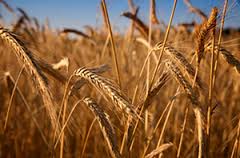Pre-scaling up of bread wheat variety (Danda’a) through FRG/FREG in Bale and West Arsi zones of Oromia national regional state, Ethiopia
Keywords:
Bread wheat, Pre-scaling up, FRGs/FREGs, Farmers’ preferences, Demand drivenAbstract
The paper presents the success of pre-scaling up activity of the best-bet improved bread wheat variety (Danda’a) with recommended full packages in Adaba and Dodola districts of West Arsi Zone, and Sinana, Agarfa and Ginnir districts of Bale Zone of Oromia National Regional State, Ethiopia in the year 2013/14 through the support of East African Agricultural Productivity Project (EAAPP) in multi-stakeholder approach. Generating, demonstrating, evaluating, validating, popularizing and disseminating improved bread wheat technologies to smallholder farmers are vital in facilitating adoption of these technologies. The objectives were to convince the merits and increase confidence on Danda’a variety, thereby to facilitate dissemination and adoption of the technologies through farmer-to-farmer extension approach, to change the outlook (KSA) and increase farmers motivation through participatory training on principles of wheat production and management practices/packages, to strengthen and enable farmers to produce quality seeds for their own use and disseminate the technology to their surrounding farmers (farmer-to-farmer seed dissemination system), to ensure the local availability of seeds of Danda’a variety for the majority of smallholders in the study area, to strengthening the established and create new FRGs/FREGs and to enhance linkage among the relevant stakeholders in the study zones. Three wheat growing potential kebeles were selected from each participant district and a total of fifteen kebeles were selected for the study. One FRG/FREG having 20 members with the composition of men, women and youth farmers was established in each kebele. A total of 300 farmers were participated in the activity. Three trial farmers from FRG/FREG members were selected at each kebele (45 hosting model farmers in five districts) with the help of group members and DAs. Farmers were considered as replications. A total of 375 individuals (87.7% male and 12.3% female) from the five districts (300 FRGs/FREGs member farmers, 25 agricultural experts, 45 DAs & 5 supervisors) were participated on both theoretical (in-room) and practical (on-spot) training on wheat production and management packages. A total of 691.2 kg seed (138.24 kg seed for each district) of improved bread wheat variety (Danda’a), 230.4 kg UREA and 460.8 kg DAP (inorganic fertilizers) were distributed to 45 trial farmers for pre-scaling up purpose. 2.5 liter Pallas 45 OD herbicide was used for pre-scaling up purpose on 4.608 ha (46080 m2) land of 45 trial farmers. To show the overall performance of Danda’a variety, field day was jointly organized in collaboration with other stakeholders (Chemtex PLC, zone and district level agriculture development offices and participant farmers) at each district and about 500 participants were participated on this event including FRGs/FREGs members and follower farmers in the five districts. Besides, handover strategy of Danda’a variety for further scale-out on wider area was also facilitated. Strong linkage among stakeholders (links to networks) was created that bridge further participatory effective up-scaling/dissemination of the best-bet wheat technologies that fulfilling farmers’ need and interest. Adoption and dissemination of improved bread wheat technologies enhanced through farmer-to-farmer learning mechanisms using FRGs/FREGs approach. Thus, demand driven agricultural technologies transfer created.
References
Agricultural Transformation Agency (ATA), 2012. Agricultural Cooperatives Sector Development Strategy 2012 – 2016, June 2012. Addis Ababa, Ethiopia.
Bale Zone Agriculture Development Office, 2014. Annual Report (Unpublished).
Bekele D., 2011. Analysis of rural women farmers’ drudgery and their role in agricultural production: The case of Sinana districts, Bale zone, Oromiya national regional state, Ethiopia. M. Sc. Thesis. Haramaya University, Ethiopia.
Central Statistical Agency (CSA), 2013. The Federal Democratic Republic of Ethiopia. Central Statistical Agency Agricultural Sample Survey 2011/2012 (2004 E.C.): Report on Area and Production of Major Crops (Private Peasant Holdings, Meher Season), Volume I. Addis Ababa, Ethiopia.
Crop Variety Registry Book, 2014. Addis Ababa, Ethiopia.
Dan, M., 2012. Integrating consumer preferences into breeding: A stepping stone to food security. Department of Agricultural Economics, Tokyo University of Agriculture, Japan. Presented on Wheat for Food Security in Africa. October 8-12, Addis Ababa, Ethiopia.
Food and Agricultural Organization of the United Nations (FAO), 2014. The State of Food and Agriculture. Innovation in Family Farming. Rome, Italy.
Ministry of Finance and Economic Development, 2010. Addis Ababa, Ethiopia.
Sinana Agricultural Research Center (SARC), 2014. Information Bulletin, December.
Tolesa, A., 2014. Adoption of improved agricultural practices and wheat production efficiency of smallholders in Arsi zone of Ethiopia. Ph. D. Dissertation. Haramaya University, Ethiopia.
UNDP Ethiopia. No 3/2012. Development Brief. Promoting ICT based agricultural knowledge management to increase production and productivity of smallholder farmers in Ethiopia.
West Arsi Zone Agriculture Development Office, 2014. Annual Report (Unpublished).

Published
How to Cite
Issue
Section
Copyright (c) 2020 Amare Biftu, Bekele Diriba

This work is licensed under a Creative Commons Attribution-NonCommercial-NoDerivatives 4.0 International License.



